Research on Wavelet Transform Modulus Maxima and OTSU in Edge Detection
Abstract
1. Introduction
2. Study Area and Data
2.1. Study Area
2.2. Data
3. Materials and Methods
3.1. Theory
3.1.1. Wavelet Transform Modulus Maxima
3.1.2. OTSU
3.1.3. Information Entropy and SSIM
3.2. Data Processing
3.2.1. Pre-Treatment
3.2.2. Wavelet Transform Modulus Maxima Image
4. Results and Verification
5. Analysis and Discussion
6. Conclusions
- (1)
- Facing images with more complex backgrounds, a combination of wavelet transform mode maxima and OTSU is used to perform edge detection on them, which improves the overall edge detection effect while replacing the traditional practice of manually debugging thresholds and improving the efficiency of edge detection;
- (2)
- Information entropy and SSIM are used as evaluation metrics to quantitatively evaluate the detection effect when evaluating the merits of the detection effect. According to these two metrics, the difference between different processing results can be reflected more objectively, which is more convincing compared to the artificial subjective evaluation.
Author Contributions
Funding
Institutional Review Board Statement
Informed Consent Statement
Data Availability Statement
Acknowledgments
Conflicts of Interest
References
- Ansari, M.A.; Kurchaniya, D.; Dixit, M. A Comprehensive Analysis of Image Edge Detection Techniques. Int. J. Multimed. Ubiquitous Eng. 2017, 12, 1–12. [Google Scholar] [CrossRef]
- Hao, Z.; Wang, G.; Dang, X. Car-Sense: Vehicle Occupant Legacy Hazard Detection Method Based on DFWS. Appl. Sci. 2022, 12, 11809. [Google Scholar] [CrossRef]
- Wang, Y.; Fu, Q.; Lin, N.; Lan, H.; Zhang, H.; Ergesh, T. Identification and Classification of Defects in PE Gas Pipelines Based on VGG16. Appl. Sci. 2022, 12, 11697. [Google Scholar] [CrossRef]
- Lisowska, A. Efficient Edge Detection Method for Focused Images. Appl. Sci. 2022, 12, 11668. [Google Scholar] [CrossRef]
- Song, D.; Song I, S.; Kim, J.; Choi, J.; Lee, Y. Semantic Decomposition and Anomaly Detection of Tympanic Membrane Endoscopic Images. Appl. Sci. 2022, 12, 11677. [Google Scholar] [CrossRef]
- Nausheen, N.; Seal, A.; Khanna, P.; Halder, S. A FPGA based implementation of Sobel edge detection. Microprocess. Microsyst. 2018, 56, 84–91. [Google Scholar] [CrossRef]
- Masters, B.R.; Gonzalez, R.C.; Woods, R. Digital image processing. J. Biomed. Opt. 2009, 14, 029901. [Google Scholar]
- James, A.P.; Dimitrijev, S. Inter-image outliers and their application to image classification. Pattern Recognit. 2010, 43, 4101–4112. [Google Scholar] [CrossRef]
- Hu, X.; Liu, Y.; Wang, K.; Ren, B. Learning hybrid convolutional features for edge detection. Neurocomputing 2018, 313, 377–385. [Google Scholar] [CrossRef]
- Tjirkallis, A.; Kyprianou, A. Damage detection under varying environmental and operational conditions using Wavelet Transform Modulus Maxima decay lines similarity. Mech. Syst. Signal Process. 2016, 66–67, 282–297. [Google Scholar] [CrossRef]
- Kong, X. Analysis of Tunnel Monitoring Results Based on Modulus Maxima Method of Wavelet Transform. Int. Symp. Comput. Intell. Design. IEEE 2017, 1, 140–143. [Google Scholar]
- Gu, Y.; Lv, J.; Bo, J.; Zhao, B.; Zheng, K.; Zhao, Y.; Tao, J.; Qin, Y.; Wang, W.; Liang, J. An improved wavelet modulus algorithm based on fusion of light intensity and degree of polarization. Appl. Sci. 2022, 12, 3558. [Google Scholar] [CrossRef]
- Barr, M.; Serdean, C. Wavelet transform modulus maxima-based robust logo watermarking. IET Image Process. 2020, 14, 697–708. [Google Scholar] [CrossRef]
- Ding, W.; Li, Z. Research on adaptive modulus maxima selection of wavelet modulus maxima denoising. J. Eng. 2019, 2019, 175–180. [Google Scholar] [CrossRef]
- Shugar D, H.; Jacquemart, M.; Shean, D.; Bhushan, S.; Upadhyay, K.; Sattar, A.; Schwanghart, W.; McBride, S.; de Vries, M.V.W.; Mergili, M.; et al. A massive rock and ice avalanche caused the 2021 disaster at Chamoli, Indian Himalaya. Science 2021, 373, 300–306. [Google Scholar] [CrossRef] [PubMed]
- Goh, T.Y.; Basah, S.N.; Yazid, H.; Safar, M.J.A.; Saad, F.S.A. Performance analysis of image thresholding: Otsu technique. Measurement 2018, 114, 298–307. [Google Scholar] [CrossRef]
- Dutta, K.; Talukdar, D.; Bora, S.S. Segmentation of unhealthy leaves in cruciferous crops for early disease detection using vegetative indices and Otsu thresholding of aerial images. Measurement 2022, 189, 110478. [Google Scholar] [CrossRef]
- Gupta, N.; Khanna, P. A non-invasive and adaptive CAD system to detect brain tumor from T2-weighted MRIs using customized Otsu’s thresholding with prominent features and supervised learning. Signal Process. Image Commun. 2017, 59, 18–26. [Google Scholar] [CrossRef]
- Azeroual, A.; Afdel, K. Fast image edge detection based on faber schauder wavelet and otsu threshold. Heliyon 2017, 3, e00485. [Google Scholar] [CrossRef]
- Salem, N.; Sobhy, N.M.; El Dosoky, M. A comparative study of white blood cells segmentation using otsu threshold and watershed transformation. J. Biomed. Eng. Med. Imaging 2016, 3, 15. [Google Scholar] [CrossRef]
- Muhuri, A.; Ratha, D.; Bhattacharya, A. Seasonal snow cover change detection over the Indian Himalayas using polarimetric SAR images. IEEE Geosci. Remote Sens. Lett. 2017, 14, 2340–2344. [Google Scholar] [CrossRef]
- Henley, C.; Maeda, T.; Swedish, T.; Raskar, R. Imaging behind occluders using two-bounce light. In Computer Vision–ECCV 2020: 16th European Conference, Glasgow, UK, 23–28 August 2020; Proceedings, Part XXIX 16; Springer International Publishing: Berlin/Heidelberg, Germany, 2020; pp. 573–588. [Google Scholar]
- Tan, C.; Elhattab, A.; Uddin, N. “Drive-by’’ bridge frequency-based monitoring utilizing wavelet transform. J. Civ. Struct. Health Monit. 2017, 7, 615–625. [Google Scholar] [CrossRef]
- Huang, J.; Deng, T.; Cao, M.; Qian, X.; Bayat, M. A Feature of Mechanics-Driven Statistical Moments of Wavelet Transform-Processed Dynamic Responses for Damage Detection in Beam-Type Structures. Appl. Sci. 2022, 12, 11561. [Google Scholar] [CrossRef]
- Zhang, Y.; Han, J.; Jing, L.; Wang, C.; Zhao, L. Intelligent Fault Diagnosis of Broken Wires for Steel Wire Ropes Based on Generative Adversarial Nets. Appl. Sci. 2022, 12, 11552. [Google Scholar] [CrossRef]
- Mallat, S.; Hwang, W. Singularity detection and processing with wavelets. IEEE Trans. Inform. Theory 1992, 38, 617–643. [Google Scholar] [CrossRef]
- De Silva, D.D.N.; Fernando, S.; Piyatilake, I.T.S.; Karunarathne, A.V.S. Wavelet based edge feature enhancement for convolutional neural networks. In Proceedings of the Eleventh International Conference on Machine Vision (ICMV 2018), Munich, Germany, 1–3 November 2018; Volume 11041, pp. 751–760. [Google Scholar]
- Akagic, A.; Buza, E.; Omanovic, S.; Karabegovic, A. Pavement crack detection using Otsu thresholding for image segmentation. In Proceedings of the 2018 41st International Convention on Information and Communication Technology, Electronics and Microelectronics (MIPRO), Opatija, Croatia, 21–25 May 2018; pp. 1092–1097. [Google Scholar]
- Feng, Y.; Liu, Y.; Liu, Z.; Liu, W.; Yao, Q.; Zhang, X. A Novel Interval Iterative Multi-Thresholding Algorithm Based on Hybrid Spatial Filter and Region Growing for Medical Brain MR Images. Appl. Sci. 2023, 13, 1087. [Google Scholar] [CrossRef]
- Guo, L.; Wu, S. FPGA implementation of a real-time edge detection system based on an improved Canny algorithm. Appl. Sci. 2023, 13, 870. [Google Scholar] [CrossRef]
- Hong, S.; Jiang, Z.; Liu, L.; Wang, J.; Zhou, L.; Xu, J. Improved Mask R-CNN Combined with Otsu Preprocessing for Rice Panicle Detection and Segmentation. Appl. Sci. 2022, 12, 11701. [Google Scholar] [CrossRef]
- Qin, L.; Zhou, X.; Wu, X. Research on Wear Detection of End Milling Cutter Edge Based on Image Stitching. Appl. Sci. 2022, 12, 8100. [Google Scholar] [CrossRef]
- Oliva, D.; Abd Elaziz, M.; Hinojosa, S. Otsu’s between class variance and the tree seed algorithm. In Metaheuristic Algorithms for Image Segmentation: Theory and Applications; Springer Nature Switzerland AG: Cham, Switzerland, 2019; pp. 71–83. [Google Scholar]
- Raja, N.S.M.; Sukanya, S.A.; Nikita, Y. Improved PSO based multi-level thresholding for cancer infected breast thermal images using Otsu. Procedia Comput. Sci. 2015, 48, 524–529. [Google Scholar] [CrossRef]
- Lin, C.H.; Ho, Y.K. Shannon information entropy in position space for two-electron atomic systems. Chem. Phys. Lett. 2015, 633, 261–264. [Google Scholar] [CrossRef]
- Vopson, M.M.; Robson, S.C. A new method to study genome mutations using the information entropy. Phys. A Stat. Mech. Its Appl. 2021, 584, 126383. [Google Scholar] [CrossRef]
- Babichev, S.; Yasinska-Damri, L.; Liakh, I.; Škvor, J. Hybrid Inductive Model of Differentially and Co-Expressed Gene Expression Profile Extraction Based on the Joint Use of Clustering Technique and Convolutional Neural Network. Appl. Sci. 2022, 12, 11795. [Google Scholar] [CrossRef]
- Yu, Q.; Li, J.; Ji, S. Identity-Based and Leakage-Resilient Broadcast Encryption Scheme for Cloud Storage Service. Appl. Sci. 2022, 12, 11495. [Google Scholar] [CrossRef]
- Zhang, X.; Ouyang, T. Granular Description of Uncertain Data for Classification Rules in Three-Way Decision. Appl. Sci. 2022, 12, 11381. [Google Scholar] [CrossRef]
- Liu, W.; Yang, S.; Ye, Z.; Huang, Q.; Huang, Y. An image segmentation method based on two-dimensional entropy and chaotic lightning attachment procedure optimization algorithm. Int. J. Pattern Recognit. Artif. Intell. 2020, 34, 2054030. [Google Scholar] [CrossRef]
- Harte, J.; Newman, E.A. Maximum information entropy: A foundation for ecological theory. Trends Ecol. Evol. 2014, 29, 384–389. [Google Scholar] [CrossRef]
- Wang, Z.; Bovik, A.C.; Sheikh, H.R.; Simoncelli, E.P. Image Quality Assessment: From Error Visibility to Structural Similarity. IEEE Trans. Image Process. 2004, 13, 600–612. [Google Scholar] [CrossRef]
- Nilsson, J.; Akenine-Mller, T. Understanding SSIM. arXiv 2020, arXiv:2006.13846. [Google Scholar]
- Zheng, J.; Gao, Y.; Zhang, H.; Lei, Y.; Zhang, J. OTSU Multi-Threshold Image Segmentation Based on Improved Particle Swarm Algorithm. Appl. Sci. 2022, 12, 11514. [Google Scholar] [CrossRef]
- Vijayalakshmi, D.; Nath M, K.; Acharya, O.P. A comprehensive survey on image contrast enhancement techniques in spatial domain. Sens. Imaging 2020, 21, 40. [Google Scholar] [CrossRef]
- Verma, P.K.; Singh, N.P.; Yadav, D. Image enhancement: A review. Ambient. Commun. Comput. Syst. RACCCS 2019, 2020, 347–355. [Google Scholar]
- Dogra, A.; Goyal, B.; Agrawal, S. From multi-scale decomposition to non-multi-scale decomposition methods: A comprehensive survey of image fusion techniques and its applications. IEEE Access 2017, 5, 16040–16067. [Google Scholar] [CrossRef]
- Abderrahim, L.; Salama, M.; Abdelbaki, D. Novel design of a fractional wavelet and its application to image denoising. Bull. Electr. Eng. Inform. 2020, 9, 129–140. [Google Scholar] [CrossRef]
- Zhang, Q.; Shen, S.; Su, X.; Guo, Q. A novel method of medical image enhancement based on wavelet decomposition. Autom. Control. Comput. Sci. 2017, 51, 263–269. [Google Scholar] [CrossRef]
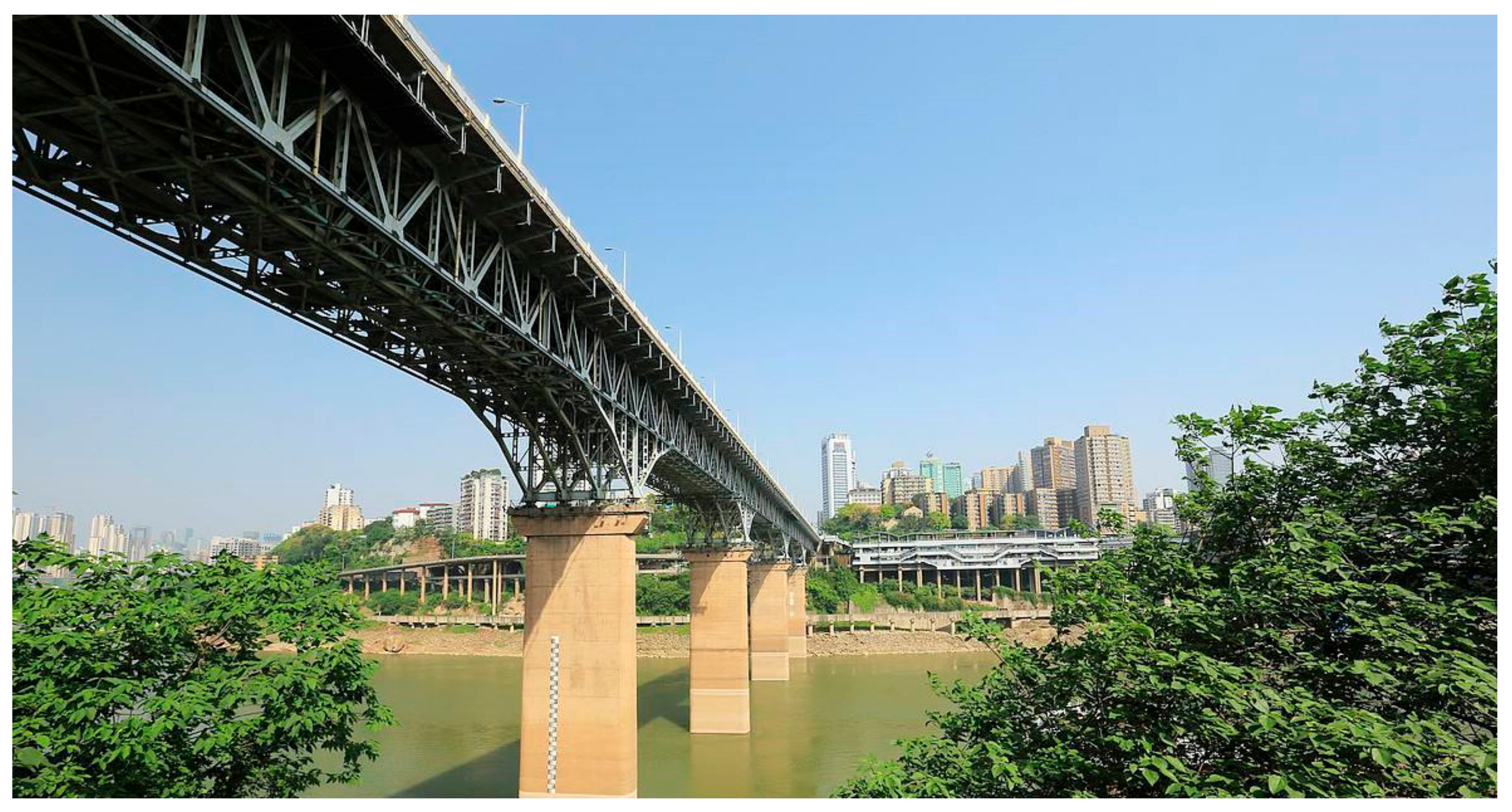
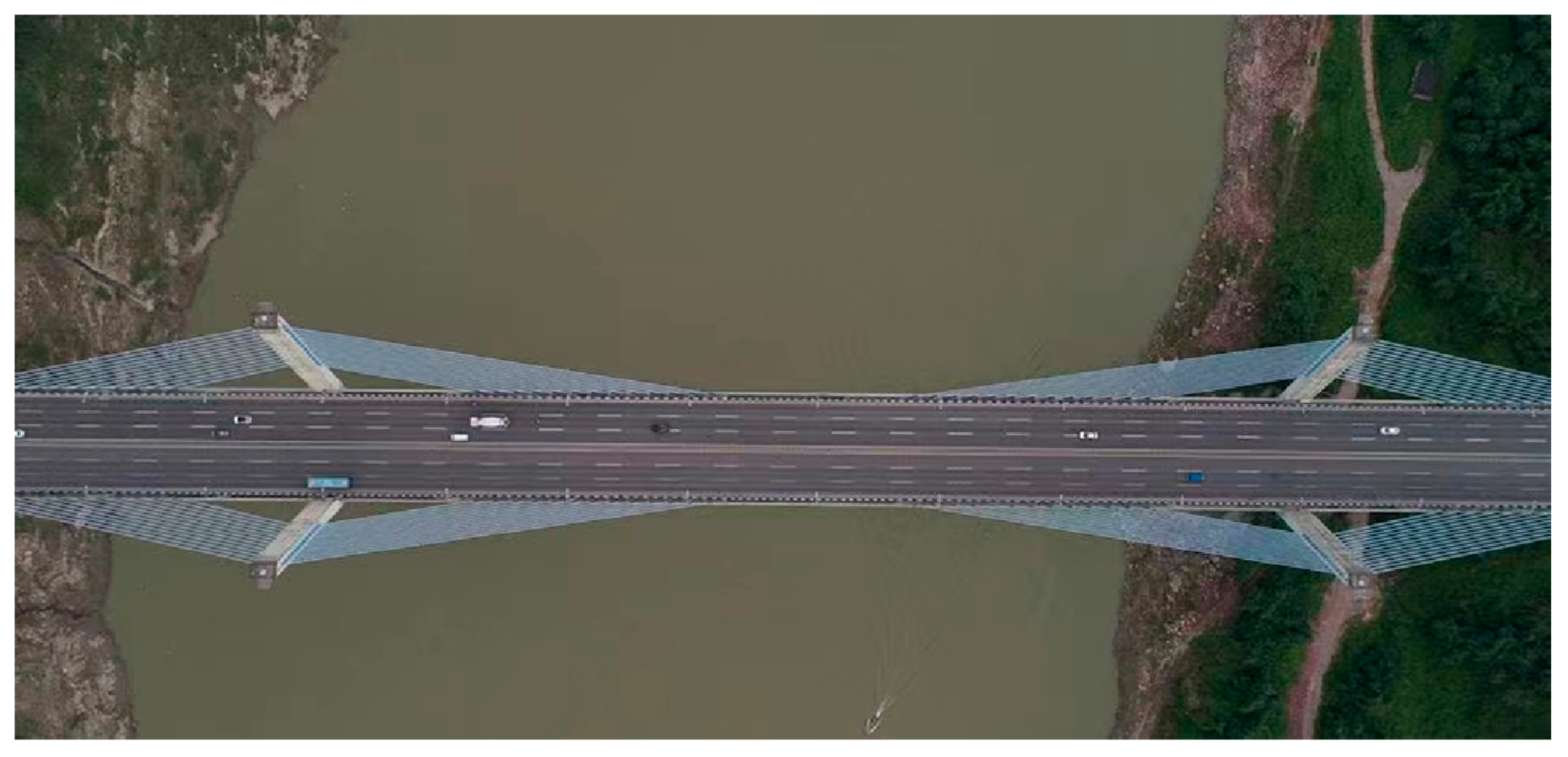
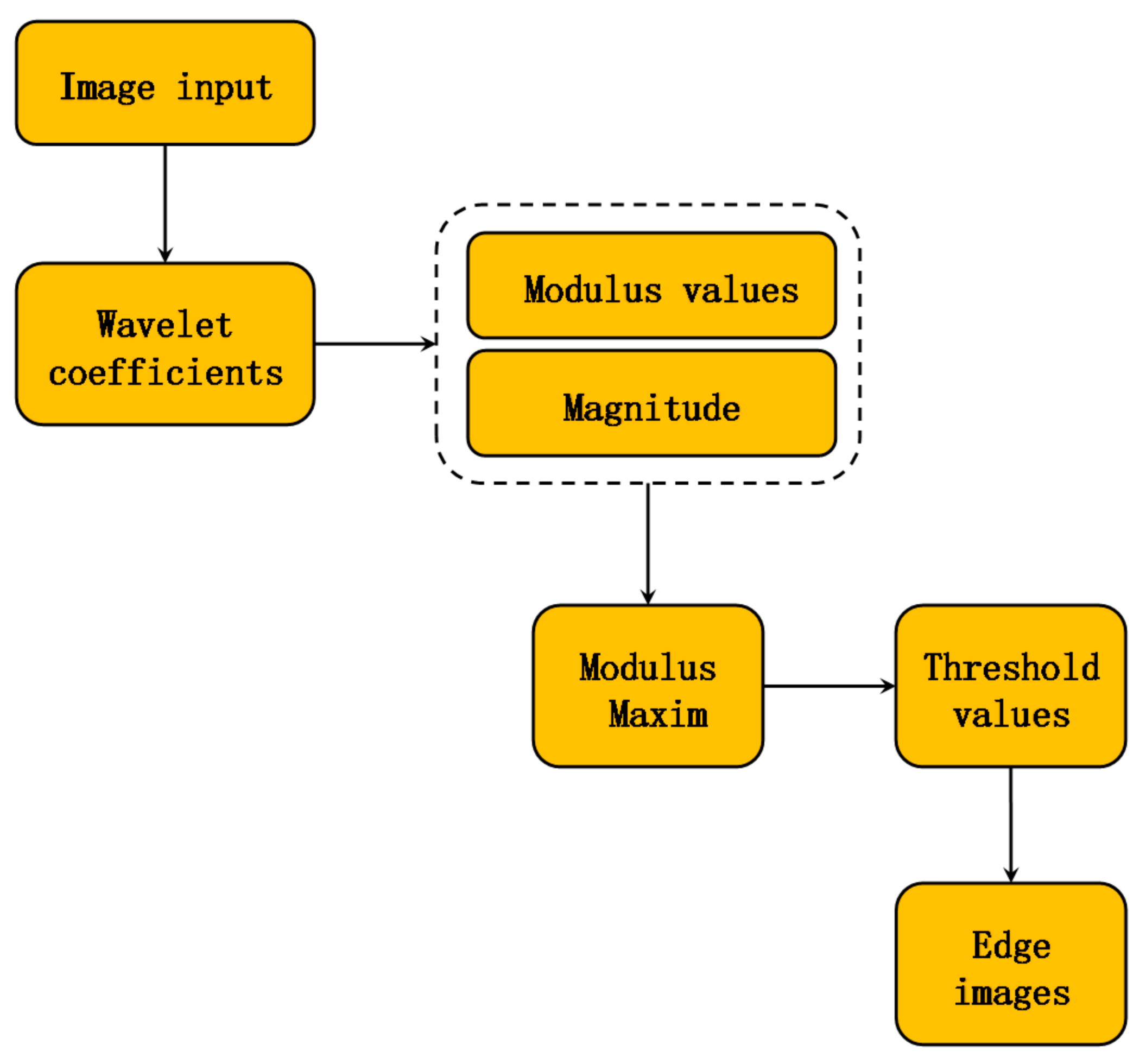

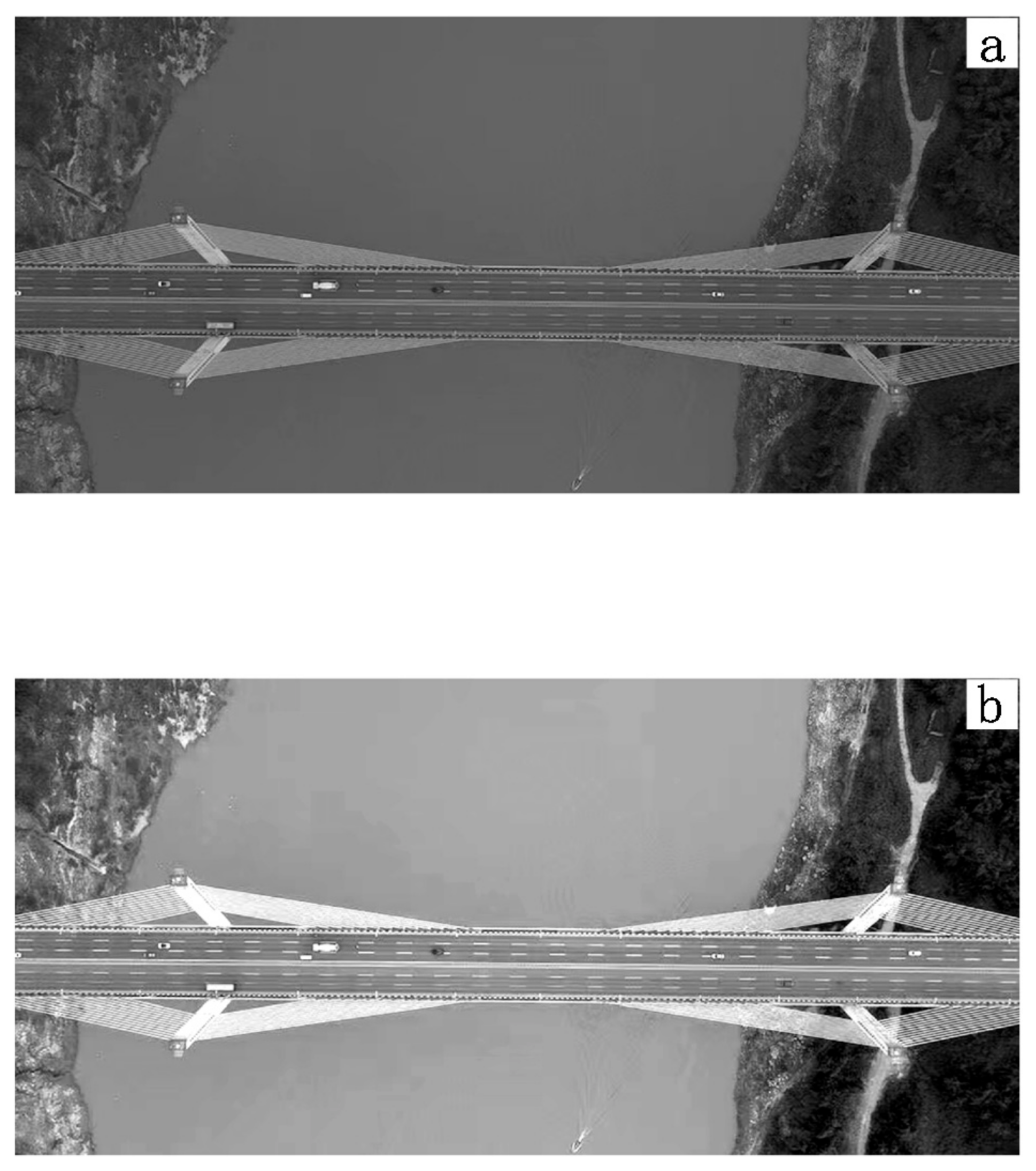
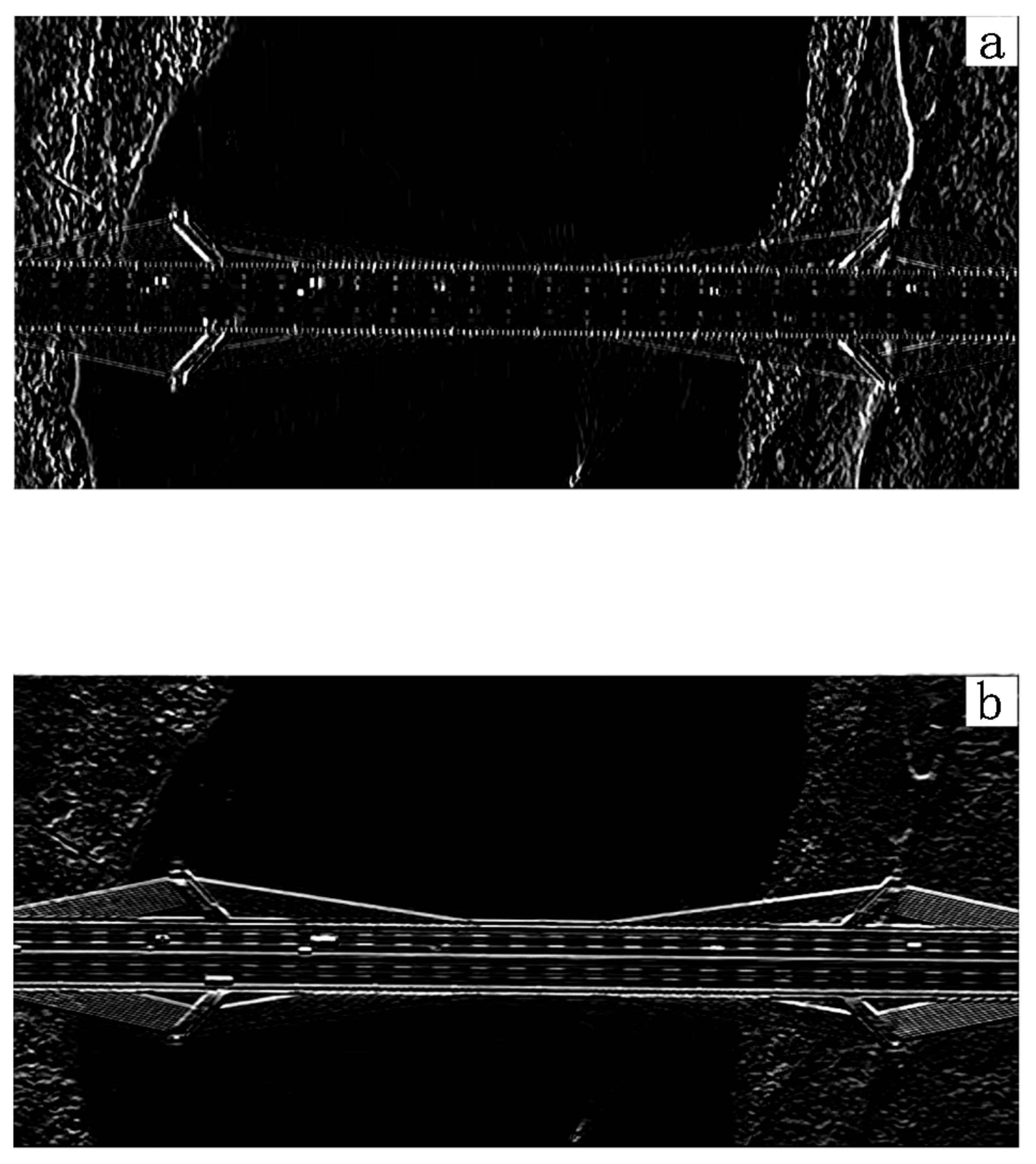
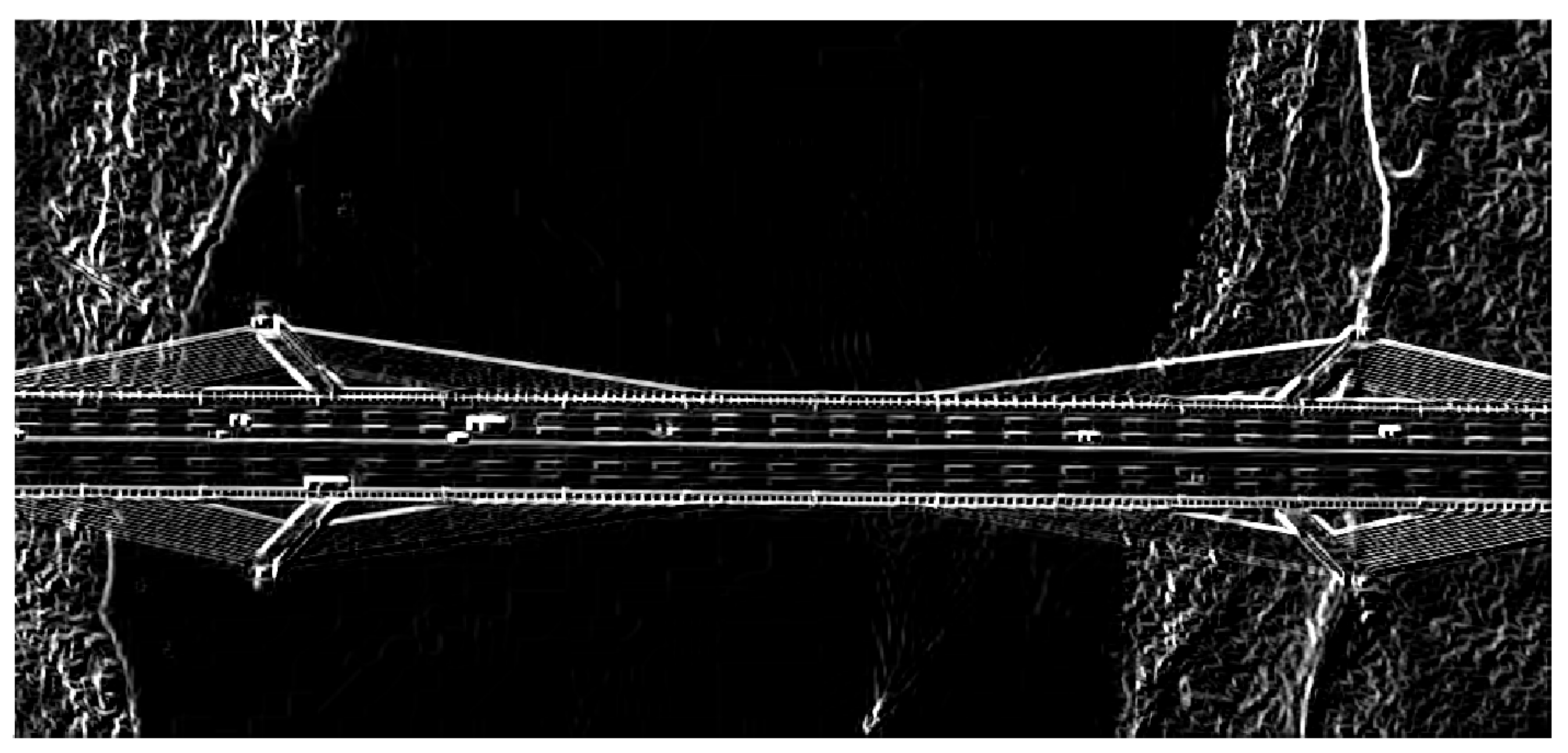
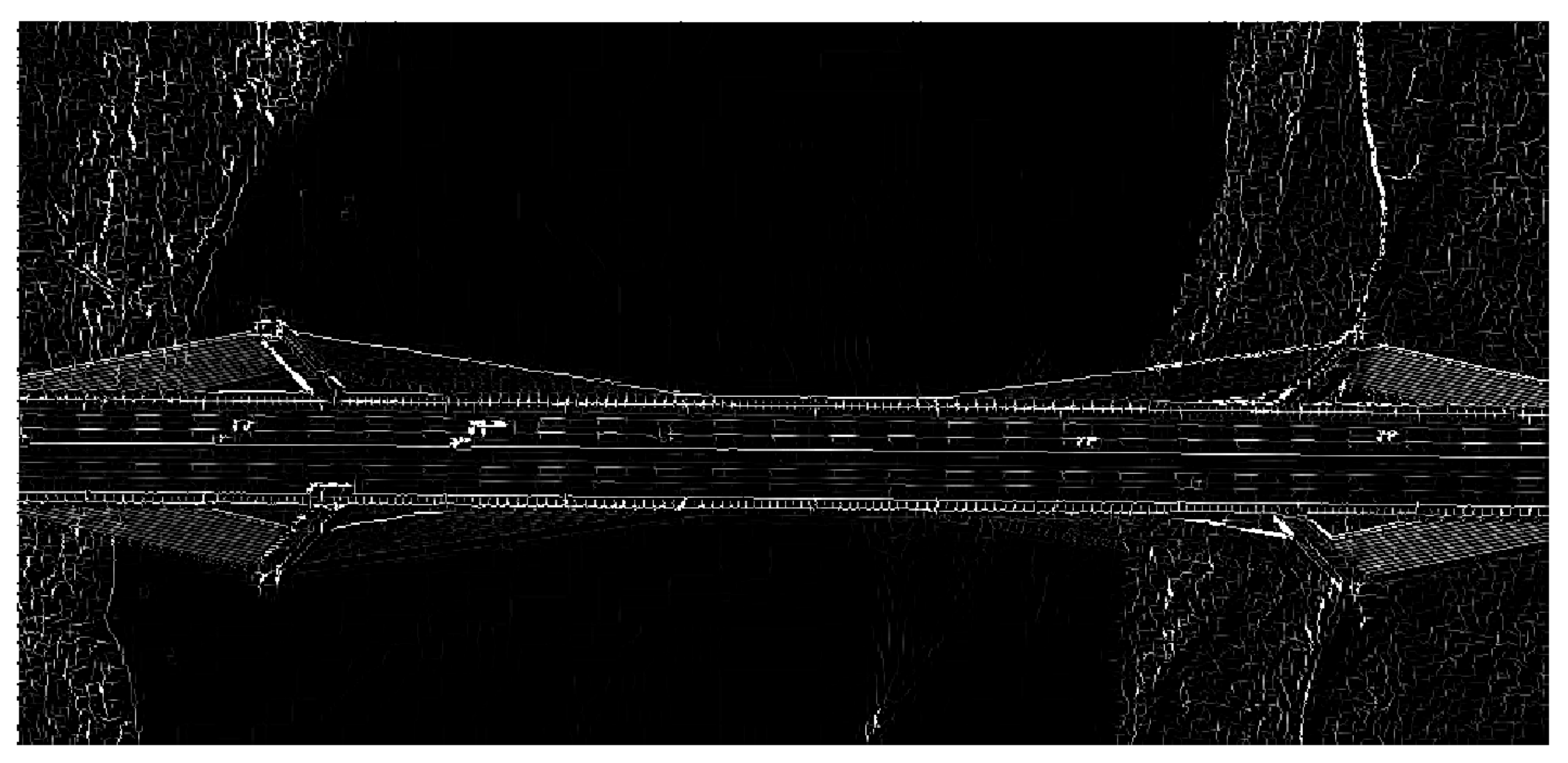



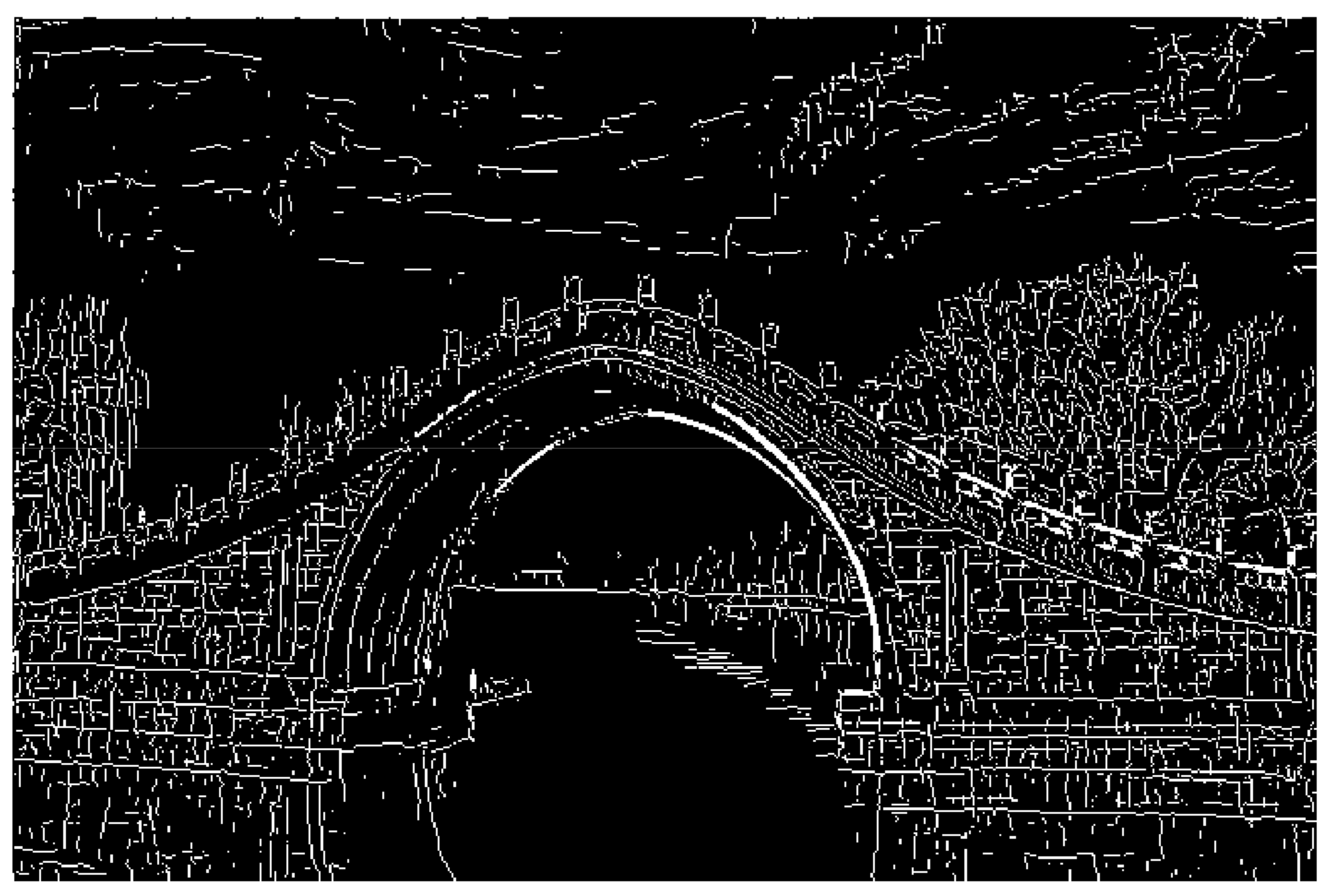

| Algorithms | Information Entropy | SSIM |
|---|---|---|
| Wavelet transform modulus maxima method | 2.5691 | 0.0023 |
| Canny | 2.1792 | 0.0022 |
| Laplace | 2.1792 | 0.0017 |
| Algorithms | Information Entropy | SSIM |
|---|---|---|
| Wavelet transform modulus maxima method | 2.5796 | 0.0030 |
| Canny | 2.4989 | 0.0030 |
| Laplace | 2.1128 | 0.0027 |
Disclaimer/Publisher’s Note: The statements, opinions and data contained in all publications are solely those of the individual author(s) and contributor(s) and not of MDPI and/or the editor(s). MDPI and/or the editor(s) disclaim responsibility for any injury to people or property resulting from any ideas, methods, instructions or products referred to in the content. |
© 2023 by the authors. Licensee MDPI, Basel, Switzerland. This article is an open access article distributed under the terms and conditions of the Creative Commons Attribution (CC BY) license (https://creativecommons.org/licenses/by/4.0/).
Share and Cite
You, N.; Han, L.; Liu, Y.; Zhu, D.; Zuo, X.; Song, W. Research on Wavelet Transform Modulus Maxima and OTSU in Edge Detection. Appl. Sci. 2023, 13, 4454. https://doi.org/10.3390/app13074454
You N, Han L, Liu Y, Zhu D, Zuo X, Song W. Research on Wavelet Transform Modulus Maxima and OTSU in Edge Detection. Applied Sciences. 2023; 13(7):4454. https://doi.org/10.3390/app13074454
Chicago/Turabian StyleYou, Ning, Libo Han, Yuming Liu, Daming Zhu, Xiaoqing Zuo, and Weiwei Song. 2023. "Research on Wavelet Transform Modulus Maxima and OTSU in Edge Detection" Applied Sciences 13, no. 7: 4454. https://doi.org/10.3390/app13074454
APA StyleYou, N., Han, L., Liu, Y., Zhu, D., Zuo, X., & Song, W. (2023). Research on Wavelet Transform Modulus Maxima and OTSU in Edge Detection. Applied Sciences, 13(7), 4454. https://doi.org/10.3390/app13074454




